Tashkent and the Fergana Valley, Uzbekistan
- Olivia McPherson
- Oct 25, 2022
- 4 min read
On 3rd October 2022 we started our journey to Tashkent in Uzbekistan, traveling by bus from Bishkek in Kyrgyzstan. The route takes you north into Kazakhstan where most of the journey is. We set off at 11:30pm and arrived at our hostel in Tashkent around 12:30pm the next day, after 2 border crossings, which involved getting all our bags off the bus, getting stamped out of the country, then stamped into the next county and back onto the bus again. We didn’t have any difficulties at any of the borders, they just took a long time, with lots of different people checking our entry stamps and passports.
Topchan Hostel in Tashkent has a good vibe, with lots of funky graffiti all over the walls, although the location could be better, as it isn’t near a metro station, however taxis generally only cost us 20,000 sum which is around £1.60, so we can’t complain.
Tashkent is the biggest capital in Central Asia and is a cool city which we really liked. There are plenty of imposing Soviet building, large modern government buildings, wide tree lined streets, lovely parks, and lots of dramatic water fountains. We found some great restaurants, a particular favourite was an Italian which made its own cheese, although the prices were the highest we paid in the whole of Central Asia, it was worth it for the relaxing ambience and the Burrata!

The Plov Centre was the highlight of Tashkent (well maybe Liv’s highlight), as it was great to finally try the dish that we had heard so much about. Plov is the national dish which is a mixture of rice, vegetables and meat, which is cooked in lamb fat and oil. We arrived at the Plov centre which is essentially a massive restaurant in an open barn filled with many huge cauldrons which are heated with open fires under them. This was also the first time we saw the round bread being cooked in huge ovens, where the raw dough is lined up on the insides of the ovens to cook, and once ready scraped off the inside. The Plov was delicious although a little greasy and we both needed a lie down after!
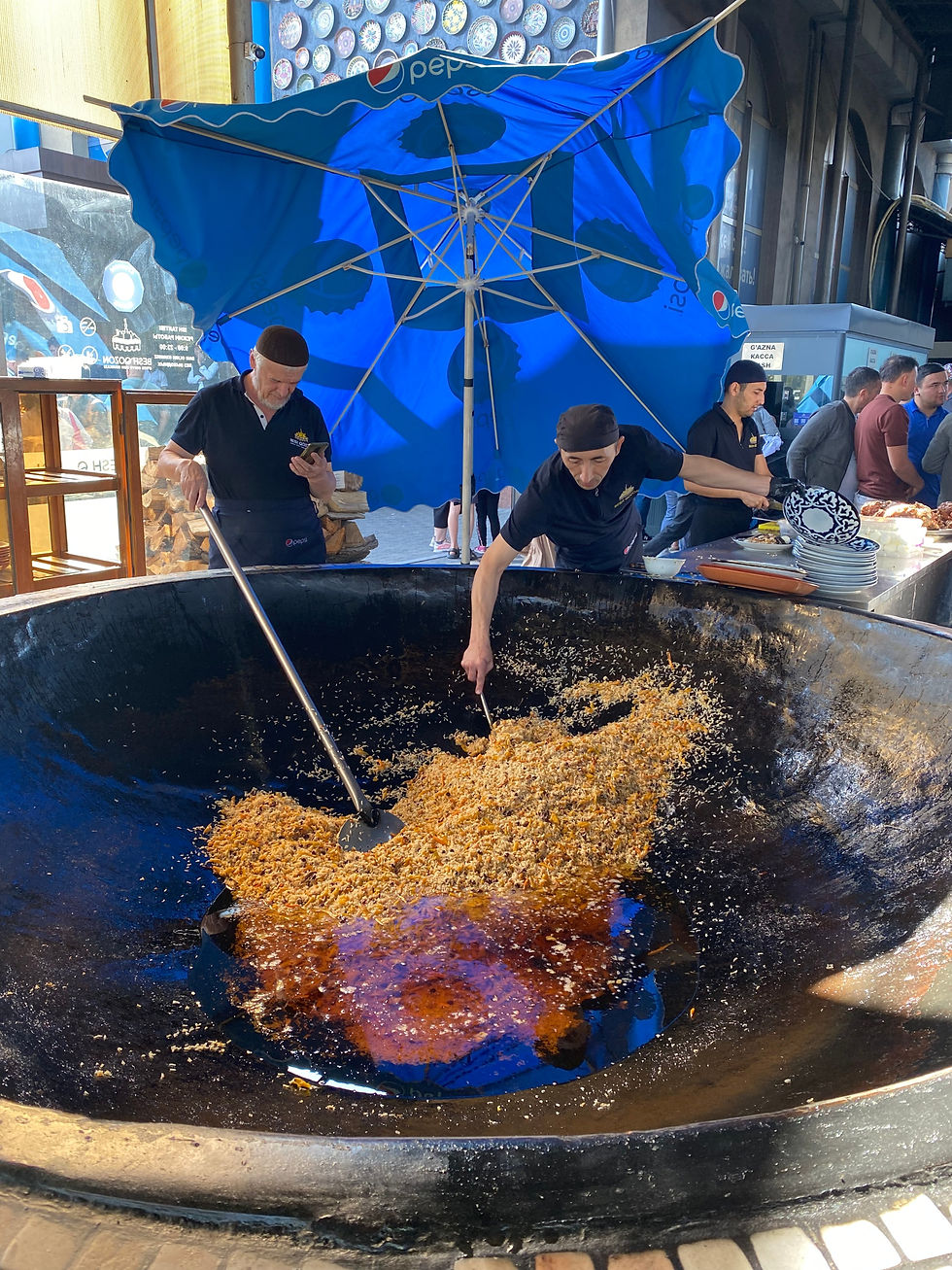
Riding the metro in Tashkent is an activity on its own and also really easy to use. Each metro station is unique and fascinating with different architectural features. Some look like ballrooms with big chandeliers hanging and one even looked like a spaceship. There are 4 metro lines, with the first metro line being opened in 1977 after a surge in Tashkent’s population. We spent a couple of hours riding around on the metro gawping at the beauty of the stations.

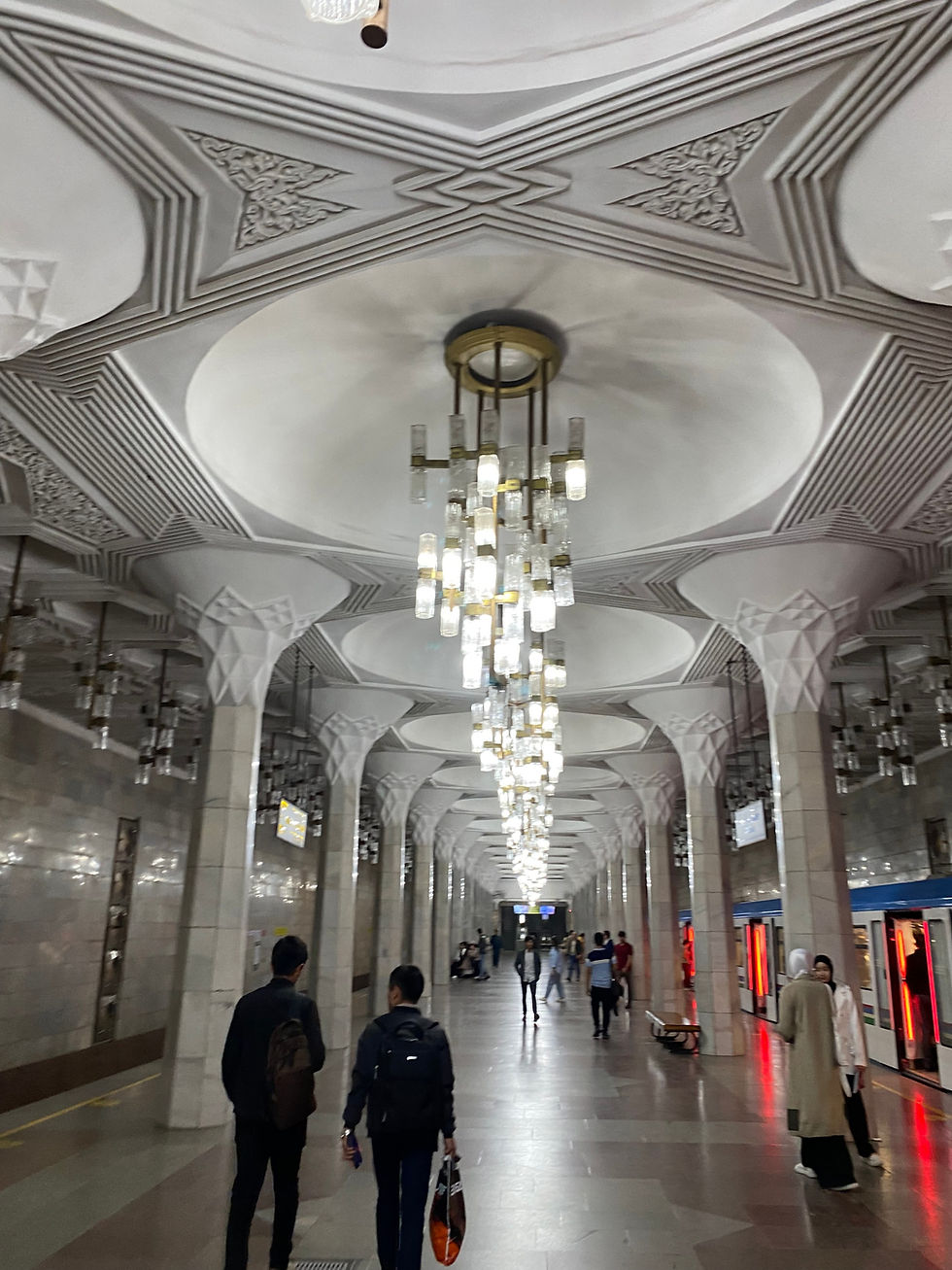
We visited the Hazrati Imam complex which was the first place where we saw beautiful blue tiled religious buildings and monuments. We visited the mosque (separate male & female entrances, and no shoes allowed) and entered the madras where lots of silk clothes and interesting wooden objects were being sold.

We then walked onto Chorsu Bazaar which is the biggest market in Tashkent.
There we saw plenty of Horse meet for sale and also Kurt which is dry small round white cheese balls (we didn’t have the guts to try them but saw them at every market in Uzbekistan).

Over the course of our time in Tashkent we kept coming back to the Amir Timur Square, opposite the iconic Soviet Hotel Uzbekistan, which was built in 1974. The leafy square has 7-meter-high statue of Amir Timur on a horse in the centre. Amir Timur is an Uzbekistan hero who conquered much of central Asia around 1370 -1405.

After Tashkent we travelled to Khiva, Bukhara and Samarkand, which you can read about in our Silk Road cities blog which is already live. We then returned to Tashkent for our last night before leaving Central Asia. However, before this we found ourselves with 3 spare nights so ventured into the Fergana Valley for our last few nights. We got the train from Tashkent to Kokand which took around 4 hours. The main aim was to visit a small town called Rishton which is on the Kyrgyzstan border and is famous for making 90% of the ceramic sold in Uzbekistan. Rishton became the hub of pottery as the red clay around the town is perfect for it and they also have plenty of the natural materials needed to make the renowned cobalt and green colours you see on most tiles and ceramics. We visited the Rishton Ceramics Museum which is a family run business, and they kindly showed us the process from making the pots or bowls using the local red clay, to cooking the ceramic in the kiln, to the detailed paining techniques and patterns and materials used. It was really interesting and we wished we could have purchased some huge bowls or plates as they were stunning.

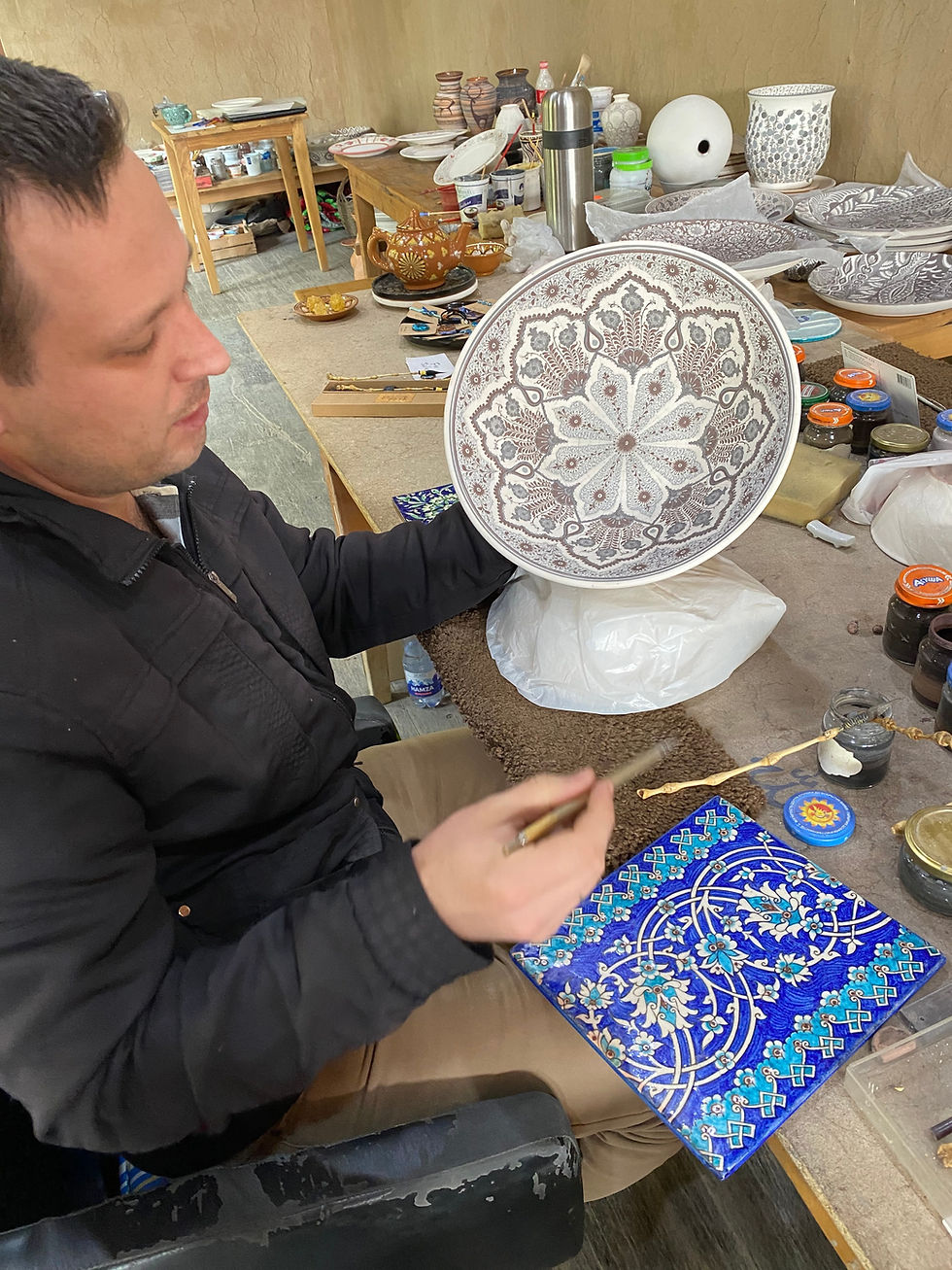
The next day we got a shared taxi to Fergana, to our next guesthouse and then went to visit a silk factory in Margilan, the neighbouring town. The experience of getting the shared minibus to Margilan was a fun and certainly different. We asked around until we found the right minibus, jumped in and then the bus only leaves once its full. It was us and 6 locals squeezed into the tiny narrow van with the driver swerving all over the place, cutting lanes and acting kind of crazy.
We joined a tour at the Yodgorlik Silk Factory, which was established in 1972 and is the only factory that still uses the traditional techniques of making silk, but also does have some machines as well. The factory employs around 450 people, the majority women and it produces up to 6,000m of fabric including natural silk and half-silk fabric a month.
It was very interesting, and we were given a lot of information and shown the techniques for extracting the silk from the worms, the colouring, weaving, and mixing with cotton.
Uzbekistan is the world’s third largest silk producer and I’m really pleased we got to see silk being made.


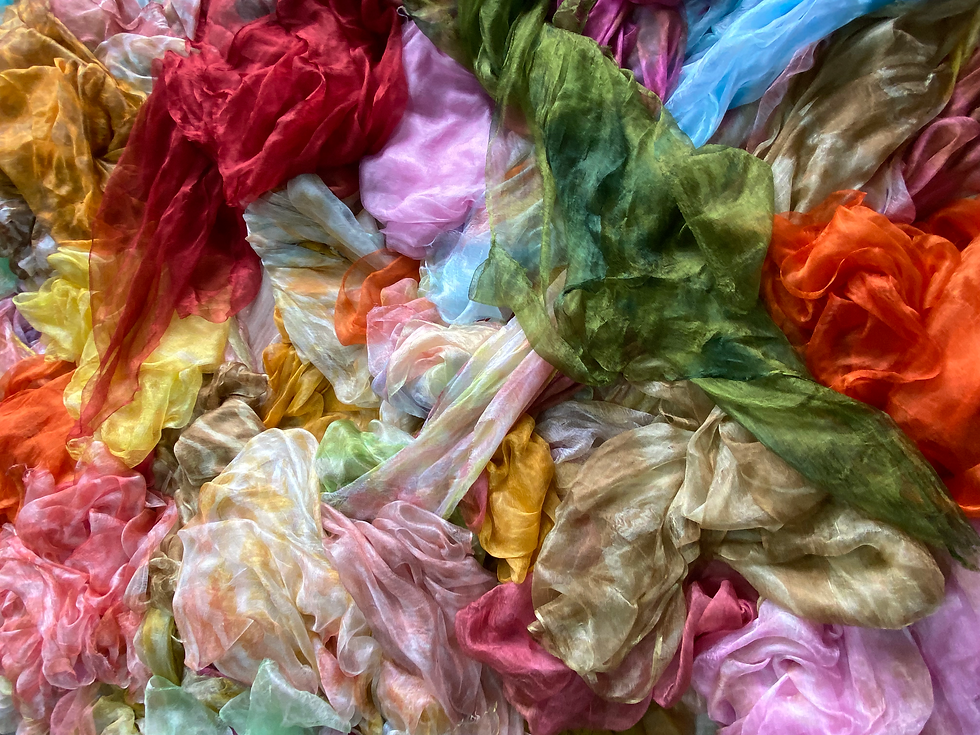
We had a great time in Uzbekistan and Liv would love to visit this beautiful country again with an empty suitcase so she can stock up on silk and ceramics. Now onto the next stop, Nepal which I’m sure will be equally impressive and we are looking forward to some beautiful mountain hikes.

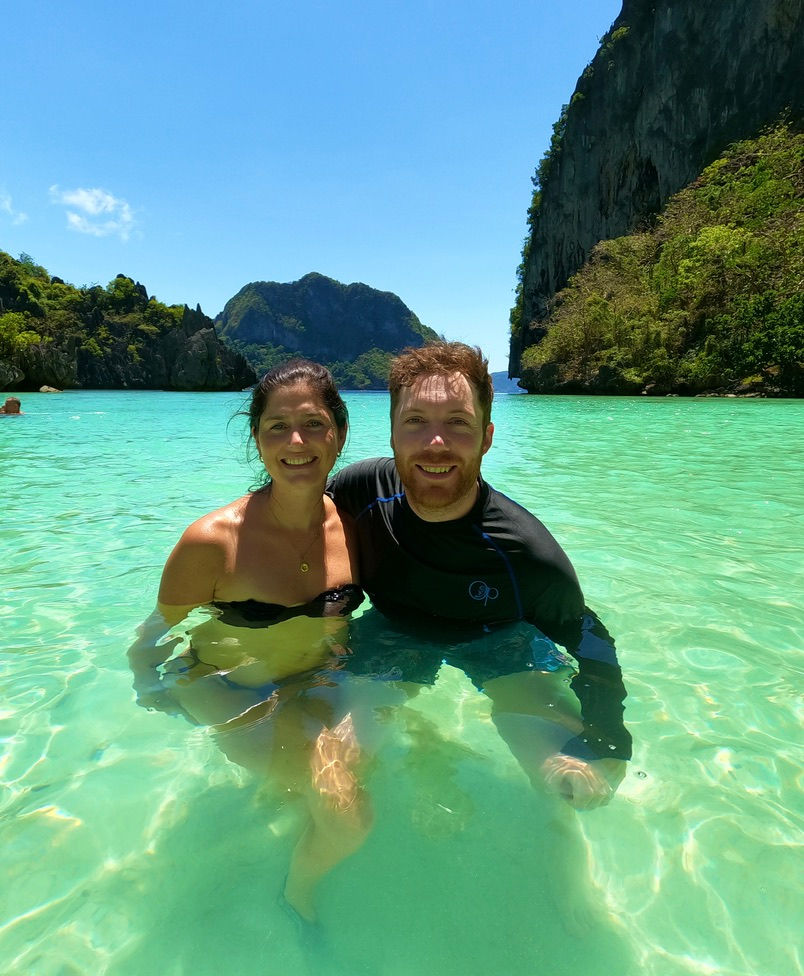

Comments